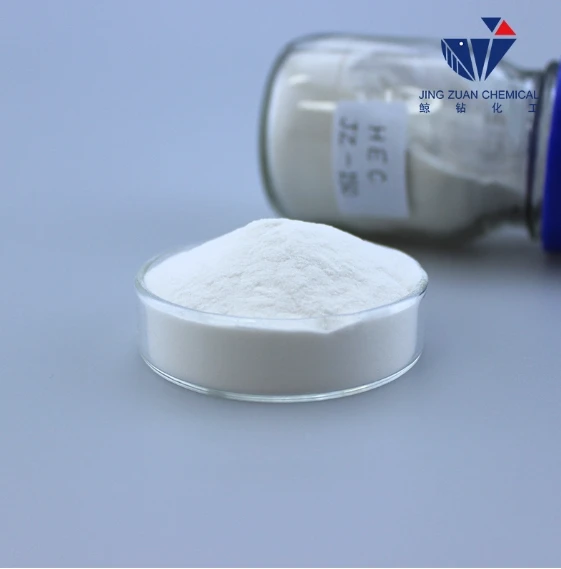
Sep . 29, 2024 06:22 Back to list
Understanding HPMC Varieties and Their Applications in Various Industries
HPMC Grades and Their Uses
Hydroxypropyl Methylcellulose (HPMC) is a popular pharmaceutical excipient and food ingredient that is widely used across various industries due to its unique properties. HPMC is a semi-synthetic polymer derived from cellulose, which has been chemically modified to enhance its functionality. Its versatility comes from its ability to form films, thicken solutions, and provide stability to formulations. This article will delve into the different grades of HPMC and their specific applications.
Understanding HPMC Grades
HPMC is classified into various grades based on the degree of methoxy and hydroxypropyl substitutions. These variations influence the viscosity, solubility, and other performance characteristics of the polymer. The main grades of HPMC include
1. Low Viscosity Grades These grades, such as HPMC E3 and HPMC E5, are used when a low viscosity is required. They dissolve easily in both hot and cold water, making them suitable for applications that require quick solubilization. Typical uses include formulations for instant foods and beverages, where rapid dispersion is essential.
2. Medium Viscosity Grades Examples include HPMC E15 and HPMC E20. These grades offer moderate thickening and gelling properties, making them ideal for use in products like sauces, dressings, and various dietary supplements. Their medium viscosity enhances the mouthfeel, improving the sensory experience of the consumer.
3. High Viscosity Grades Grades such as HPMC E50 are designed for high viscosity applications. They are often employed in pharmaceutical formulations where thickening is required. High viscosity HPMC grades can stabilize emulsions and suspensions, providing consistent texture and delivery in topical applications and controlled-release powders.
Applications in Pharmaceuticals
In the pharmaceutical industry, HPMC serves multiple purposes due to its biocompatibility and ability to modify release profiles of drugs. One of the primary uses is in tablet formulations, where HPMC acts as a binder or a coating agent. It ensures the stability and integrity of the tablet while controlling the release rate of the active ingredient.
hpmc grades and uses

Moreover, HPMC is an essential component in the preparation of hydrophilic matrices for controlled drug delivery systems. By modifying the formulation with various HPMC grades, pharmaceutical scientists can create matrices that dissolve at different rates, optimizing the therapeutic effect and reducing dosing frequency.
Additionally, HPMC is employed in ophthalmic solutions as a lubricant to enhance viscosity, providing relief for dry eyes and improving comfort during the use of contact lenses. Its non-toxic nature ensures safety for these sensitive applications.
Uses in Food and Beverage
HPMC also plays a crucial role in the food industry, acting as a thickener, stabilizer, and emulsifier. It is commonly found in gluten-free products, where it improves texture and gives a desirable consistency that mimics that of gluten-containing foods. In baked goods and processed foods, HPMC contributes to moisture retention, extending shelf life and enhancing the product's overall quality.
In beverages, low viscosity HPMC grades are utilized to maintain a uniform consistency without impacting flavor. They help in creating smooth textures in drinks, ensuring that ingredients remain suspended and providing a pleasant mouthfeel.
Cosmetic and Personal Care Applications
In the cosmetics and personal care sector, HPMC is valued for its film-forming abilities, providing structure and stability to products such as lotions, creams, and gels. By locking in moisture, it enhances the hydration properties of skincare formulations. HPMC also acts as a suspending agent for various cosmetic ingredients, ensuring that they remain evenly distributed throughout the product.
Conclusion
Hydroxypropyl Methylcellulose (HPMC) is a multifunctional polymer with a wide range of applications in pharmaceuticals, food, and cosmetic industries. The various grades of HPMC are tailored to meet specific formulation needs, from providing controlled release in drug delivery systems to enhancing the texture of gluten-free foods. As research and technology continue to evolve, the applications of HPMC are expected to expand further, solidifying its role as an essential ingredient across diverse markets. Its versatility and performance make HPMC a critical component for achieving quality and efficiency in formulations, highlighting its significance in modern manufacturing processes.
-
Versatile Hpmc Uses in Different Industries
NewsJun.19,2025
-
Redispersible Powder's Role in Enhancing Durability of Construction Products
NewsJun.19,2025
-
Hydroxyethyl Cellulose Applications Driving Green Industrial Processes
NewsJun.19,2025
-
Exploring Different Redispersible Polymer Powder
NewsJun.19,2025
-
Choosing the Right Mortar Bonding Agent
NewsJun.19,2025
-
Applications and Significance of China Hpmc in Modern Industries
NewsJun.19,2025







